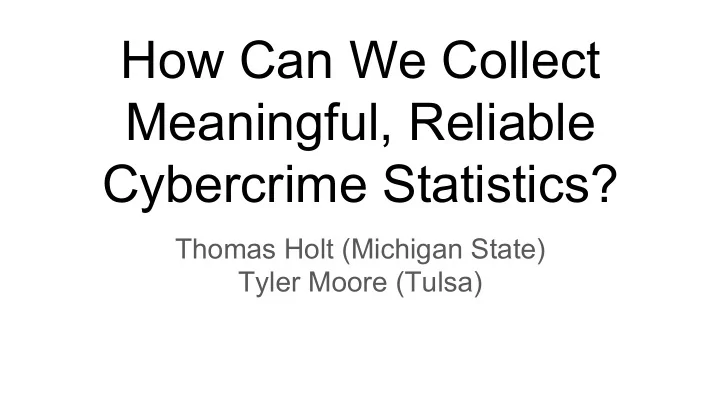

How Can We Collect Meaningful, Reliable Cybercrime Statistics? Thomas Holt (Michigan State) Tyler Moore (Tulsa)
Background and Motivation ● Cybercrime scholars have called for better reporting mechanisms since 90s ● There remains no reliable, publicly accessible source of cybercrime statistics ● Why is this a problem? ○ Hard to reliably measure extent and harm of various forms of cybercrime ○ Feeds perception that cybercrime is not a law enforcement problem ○ Hard to reliably allocate resources: to local agencies, victim services, even research funding ● But where is the grand challenge? ○ Why, despite the problems caused by its absence, cybercrime statistics are not already being collected and promulgated?
Collecting Cybercrime Statistics: a Grand Challenge? 1. Overcoming barriers to reporting by individuals 2. Overcoming barriers to reporting by organizations 3. Overcoming barriers to reporting by law enforcement agencies 4. Incentives for private parties to collect and share data for public good 5. Improving measurement of harm and defender effort 6. Identifying durable cybercrime categories that can be measured over decades-timescale
Recommendations for Research Agenda Some example possibilities: ● Assessing the perceptions of local police agencies/sheriffs' offices, inclusive of line officers and management, to understand their views of cybercrime and victims ● Survey citizens to capture their comprehension of cybercrime and what incidents merit contacting police agencies for assistance. ● Survey states' attorneys' general to identify their views on cybercrime and the likelihood of successful prosecution of these offenses. ● Examine NIBRS and other data to understand the proportion of cybercrimes currently being reported and the extent to which victims who contact these
Recommend
More recommend